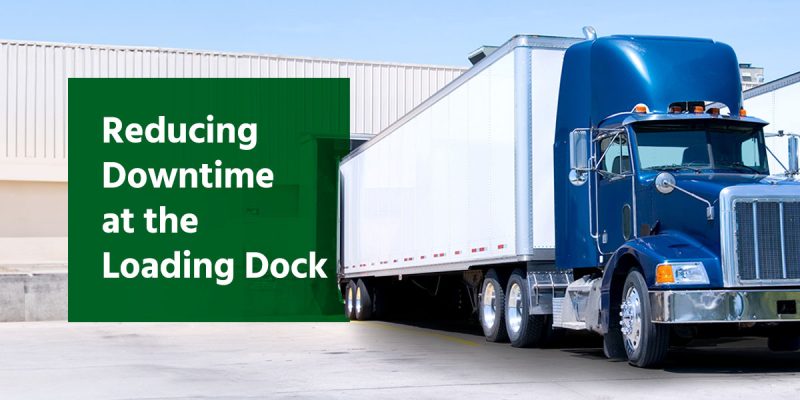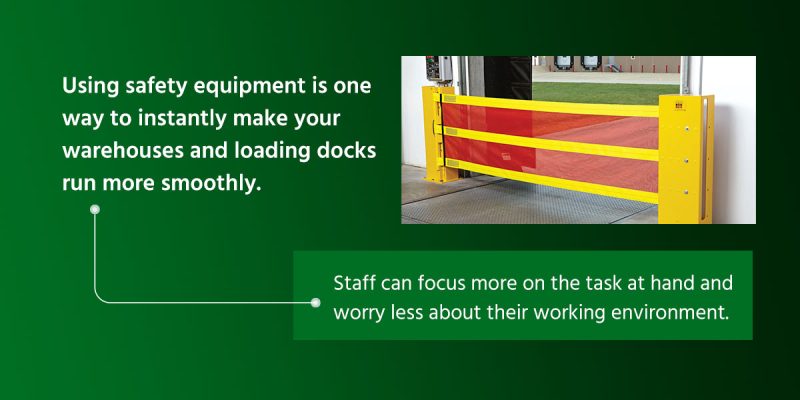Toll Free (519) 659-2832
Mon - Fri 8:00AM - 5:00PM

Operations at the loading dock form a core part of the supply chain. When the loading dock runs efficiently, the entire supply chain keeps moving — goods get to distributors, stores and customers on time. The loading dock also affects every part of logistics, from orders, deliveries and stock to client and customer satisfaction.
Delays are inevitable, but taking active steps to shorten downtime at the loading dock is one of the most effective ways to manage warehouse operations and optimize your supply chain.
Before looking at ways to reduce downtime, it’s always beneficial to examine what might cause delays.
Common causes of accidents and injuries include:
Thankfully, there are effective ways to reduce downtime and improve safety.
Applying best practices throughout your warehouses and docks will significantly improve your logistics. You can enhance efficiency by incorporating the following tips.
Routinely maintaining your loading dock equipment is crucial. When you need to upgrade or replace warehouse equipment, it can cause more than delays — equipment that is not up to standard is also a safety risk.
You can decrease the chances of delays or accidents due to equipment by scheduling regular loading dock maintenance. Preventative maintenance helps reduce emergency service calls which the are both costly major causes of downtime. During checks, confirm that your pallet trucks and forklifts work properly, ramps and stairways are clear of hazards and pavement in the loading area is free of potholes. You may also include pallet racking inspection services that include CSA damage inspection programs.

Using safety equipment is one way to instantly make your warehouses and loading docks run more smoothly. Staff can focus more on the task at hand and worry less about their working environment. With fewer potential injuries, you enjoy more uptime and improved efficiency. Appropriate safety equipment can include:
An up-to-date training program is a significant part of keeping your loading dock safe and operational. Improved safety is one goal of training your team, but a well-trained staff can also work efficiently and run seamless operations. Equipping your staff reduces downtime at the loading dock, as your team has the skills they need to quickly identify and overcome challenges.
Train your team in these essential areas.
Starting in 2024 we are offering free group training for working in and around the loading dock. Contact us to today to book Safety Training for you team through Arbon Equipment.
Load weights are vital for improving warehouse efficiency. Overloading a dock leveler will result in early failure of parts and increased downtime. Having standard protocols for load weights is necessary, as is training workers on loading and unloading different things — especially specialized items like heavy EV batteries.
Have you incorporated various methods to reduce downtime and train your employees, but still experience accidents or delays? Or, do you worry about your warehouse dock safety and compliance? It may be time to schedule a professional safety assessment to find solutions for reduced downtime and best practices.
Are you ready to reduce warehouse downtime and experience smooth, compliant operations? At Arbon Canada, we assist industrial facilities in the Ontario area with services and loading dock equipment to meet your needs and increase efficiency. Our professionals can help you find quality dock levelers, seals and shelters, vehicle restraints and portable loading docks.
We also offer a rack inspection program regardless of your certification status. Our experts can help bring your warehouse components up to code and perform yearly professional inspections to keep your business compliant. Explore our range of helpful services, including rack inspections, or contact us today!